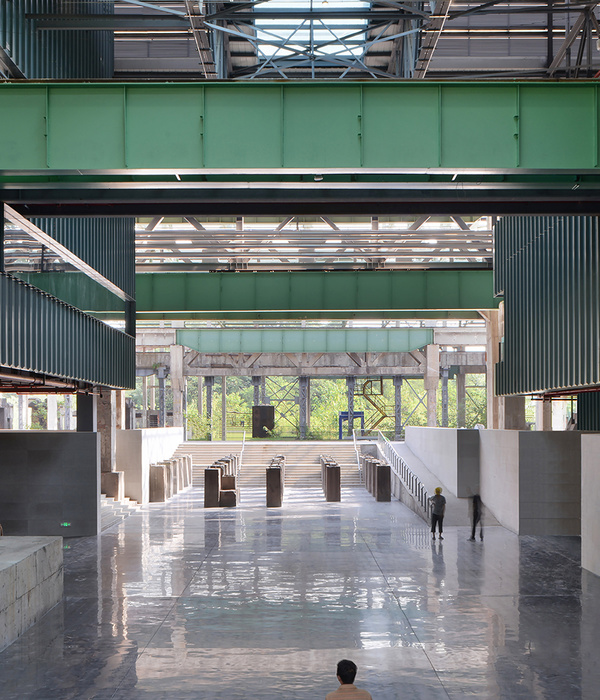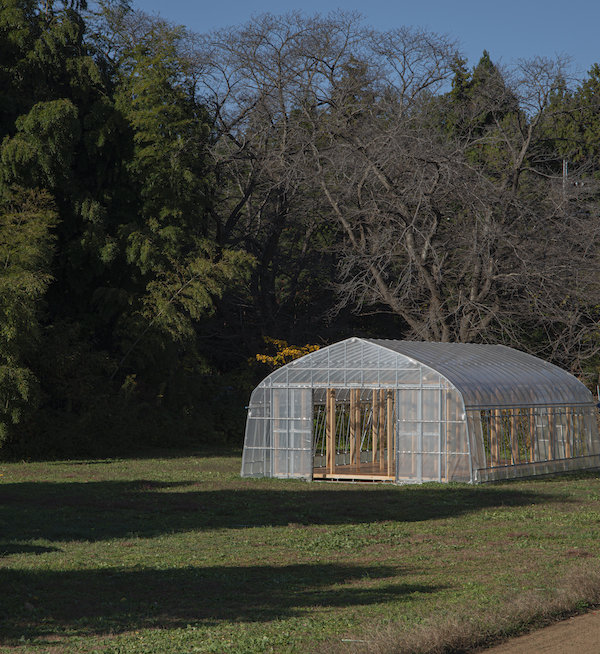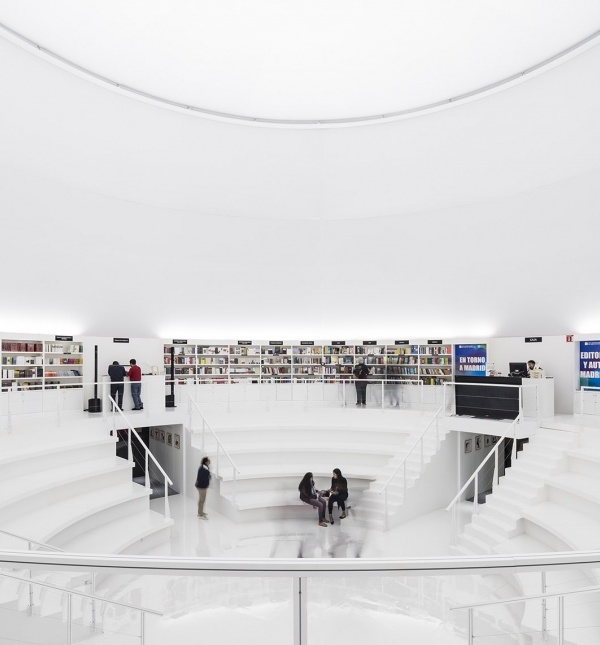“这是一个十分精彩的项目;它为专业从业人员而做,同时又服务于大众-满足大众通过虚拟系统漫游其中。它运用创新手法演绎了景观史”。
–评奖委员会
"This project is amazing; it speaks to the profession, but reaches anybody—anybody traveling. It’s really transformed the history of landscape architecture coursework. And it’s innovative".
— 2017 Awards JuryBenjamin George
项目概述
PROJECT STATEMENT
景观数字图书馆是一个对公共开放的网络系统,不仅展示了景观史中的虚拟场景,还可以对这些场景进行全景呈现,其呈现方式包括历史信息热点,图像,以及声影效果。通过使用这个系统,方便学生搜索全球景观历史资料。目前景观数字图书馆内有40个虚拟游览系统,涵盖欧洲,北美和大洋洲地区,收录了2000多年来自世界各地的24处不同的景观历史和文化背景。目前已有来自不同平台的超过17.5万访客,分别通过台式电脑,手机,Google Cardboard,或是虚拟现实耳机,如HTC Vive 或 Oculus Rift对该馆进行访问。景观现实图书馆不仅提升了人们对景观的意识,同时作为一种鼓励大众参与的媒介推动了景观的发展。另外,该图书馆对于向大学一二年级学生介绍景观的相关知识极富价值,其中还包括面向老师的免费教材。
The Digital Library of Landscape Architecture History (DiLiLAH) is a freely available, online public repository of virtual tours of historical landscapes created to encourage education and exploration of historic landscapes. Using immersive panoramic tours, filled with historic information hotspots, images, sounds, and videos, students are virtually transported to important historical sites across the globe. There are currently 40 virtual tours on DiLiLAH from Europe, North America, and Oceania, representing 2,000 years of history and 24 historic styles and cultures. Over 175,000 visitors from 102 countries have accessed the website. The virtual tours are available on multiple platforms, including desktop, mobile, Google Cardboard, and immersive virtual reality headsets such as HTC Vive and Oculus Rift. DiLiLAH raises awareness and promotes the history of landscape architecture to the public through an engaging and easy to use medium. It is a valuable recruiting tool for introducing primary and secondary school students to the field of landscape architecture, and includes free education worksheets for teachers to integrate into their curriculum.
▲使用数字技术代替文字和图片的新型图书馆,a new stylized library by using headsets instead of words and pictures
项目说明PROJECT NARRATIVE
创建景观史数字图书馆的初衷
作为一个景观教育工作者和一个历史学家,研发者发现,景观教育过程中的一个普遍难题是:学生对造园历史不感兴趣。而当今的社会是建立历史发展的基础上的,正式这些历史让大家了解造园过程和其中的缘由,因此专业从业人员有必要了解这些历史。虽然在实际工作过程中,景观学学生要因地制宜地处理问题,即便对景观史不感兴趣,也不会对设计成果造成不良影响。但是研发者反问,对于勒·诺特尔伟大的的理念和做法在全球范围内掀起巨大的造园浪潮后却只沦为文本而搁置的现象,该做出怎样的解释?
再者,在教学过程中,让学生了解造园运动和大师们的理论和做法实际上是存在争议的。一些重点问题一直在围绕该怎样让学生了解造园史,才更有意义的?教育研究表示,就地取材,因材施教才是最有效的教学方法,这也是设计教育的基本原则。但是又该如何让学生了解千百年来涉及全球的造园问题呢?
景观史数字图书馆的建立是为了跨越时间和场地的鸿沟,让学生了解全球景观史。这个图书馆对大众开放,学生通过网上公共平台就可以了解景观史。目前有40个虚拟在线系统,以信息热点,图片,以及影像的方式向学生介绍景观史知识。这些页面不再只是枯燥地布满文字和图片,它们演变成了一个可以探索的场地,拥有真实的空间形式和实际意义。它们不再是一片历史遗迹,而是一片活灵活现的存在于现实中的场景。
景观史数字图书馆的建造和发展
图书馆创建于2012年,由犹他州州立大学景观与环境规划系助理副教授Dr. Benjamin George在一次欧洲露营途中建立。露营途中,他利用途中拍摄的15幅风景照片建立了一个虚拟网站,方便学生们的课程学习。由于受到学生的好评和再次使用的请求,这些图片被放入景观数字图书馆。直到今天,还有另外的40个旅行图片在这里可以找到。这些图片被制作成360度全景视图,每一个全景图像由11到20个幅照片连接而成,并联系着导航系统和信息热点虚构成漫游界面。
与其它可视化技术相比,全景技术使虚拟游览系统拥有了更多的访问量,因为它们消耗相对较少的处理器工作量和互联网带宽。即便是乡村和不发达地区的人们也可以更轻易快捷地访问这个图书馆。此外,全景图像技术使成像分辨率更高,细节更清晰,例如浮雕,纹理和阴影下的图案都清晰可见。
景观数字图书馆在未来几年将会继续扩展和更新。另外15个设立在美国,加拿大,德国,意大利,波兰和新西兰的虚拟游览系统将陆续投入使用,其主要行程将在夏末对公众开放。景观史数字图书馆充分利用了大众对虚拟现实开发的兴趣。这些虚拟游览可以通过Google Cardboard直接访问,或者通过近期投入使用的虚拟现实耳机进行访问,像HTC Vive 和 Oculus Rift。到2017年底,大量的虚拟游览程序将通过这类耳机服务访客。另外,图书馆也会陆续开发能让访客在图书馆内体验到景观实景的创新手法,其中,首个360度全景影像游览已经在美国的多个位置进行图像收集了。
景观数字图书馆的创建目的
景观专业的师生能够使用这个图书馆通过虚拟图像的演绎学习到相关的景观史知识。而能进入到该课堂的学生,无论身处城市还是乡村,均有同等的机会体验到意大利文艺复兴期间,摩尔西班牙,奥斯曼伊斯坦布尔,以及其他地区的景观历史演化过程。数字媒体为这一代学生重新建立了‘景观大游览’的概念。为了优化自主学习过程,该图书馆还提供了免费的学习日程给初、中级教师以辅助他们教学工作。这些材料可以帮助教师更好地利用图书馆中的资源教授学生景观方面的专业知识。
该图书的教育任务已经拓展到景观史文献整理和公共宣传。新的虚拟景观游览系统也扩展到了更广的领域,每个游览过程包含了更多的全景图像以确保每个场地能有更多的信息被记录并展现给观众。2016年,景观数字图书馆除了向教育机构提供景观资源外,还吸引了越来越多的大众访客。而这一年也是该图书馆发展的一个转折点,它不仅日益扩大了吸引力,同时也在向世界各地分享着景观园林的故事。
项目总结
-该图书馆内提供了涵盖欧洲,美洲,大洋洲2000多年来,超过40个历史遗迹的历史素材,再现了24个历史、文化场景。-目前已有来自102个国家17.5万的访客。数个在美国设有景观专业的院校已经开始使用这个图书馆
该图书馆其实更等同于是一个在线虚拟游览数据库,用于提供景观史教育资料,储存相关信息以及启发潜在景观学习。该图书馆提供的360度虚拟游览体验,对全球重大景观事件进行多方位展示,例如通过Google Cardboard和HTC Vive,DiLiLAH is an online database of virtual tours. Its goal is to educate, preserve, and inspire.Experience 360° virtual tours of historically important landscapes around the globe across multiple platforms, including in virtual reality using Google Cardboard and the HTC Vive.
▲登陆景观史数字图书馆便可浏览历史景观,log onto DiLiLAH.org and explore the available historic landscapes。
选择历史景观,select a historic landscape。
▲根据说明即可使用即时虚拟游览系统,follow the directions to use the immersive virtual tour
▲依个人进度探索历史景观,explore the historical landscape at your own pace, take your time.
▲依据信息热点,学习场地历史,learn the history of the site through information hotspots.
▲馆内目前提供了11个国家的40个景观虚拟游览系统,by now the library has provided 40 virtual tours in 11 countries.
▲馆内数据库来源于工作者们几年来的实地图片采集,the database came from the on-site collection of pictures.
数据库信息涉及了两千多年来的景观发展以及24种不同的历史,文化形态,the database has included 24 historic styles and cultures through 2000 years
▲自2012年至今,通过访问该网站,已经有超过102个国家17.5万人次体验过该馆内的景观史虚拟系统
since 2012, Over 175,000 people from 102 countries have experienced the profession of landscape architecture by visiting DiLiLAH.
该馆内的景观史虚拟游览系统和图片都是永久保留在网站上的,并且对公众开放,the virtual tours and photos in DiLiLAH are a permanent and openly accessible historical record of the landscapes.
▲George, B.H. Michaels, S.E.在2012年景观教育工作者年度会议上表示,把我带到那去吧:到历史课上的场地认知和虚拟游览中去,George, B.H. Michaels, S.E. Take me there: Situated cognition and virtual tours in landscape architecture history curricula. Proceedings from 2012 Council of Educators in Landscape Architecture annual Conference. Champagne, IL.
在教育方面,该图书馆提供免费教材给初、中级景观教师,方便他们授课
DiLiLAH includes free educations materials that primary and secondary teachers can use to integrate historical landscapes into their curriculum.
Veni Vidi Didici表示,我来了,我看到了,我学到了。该图书馆使观者通过情景认知进行理论学习,并潜在地驱使景观学生身临其境地了解景观史,Veni Vidi Didici-I came, I saw, I learned.DiLiLAH uses the learning theory of situated cognition, the same theory that drives studio learning, to empower students to experience landscape architecture history.
PROJECT NARRATIVE
THE IMPETUS FOR DiLiLAH
As an educator and a historian, one of the most difficult things to face is a student who is disinterested in history, yet it happens continually. This is despite the fact that where we stand today as a society, and as a profession, is the summation of all that has come before us; and to understand who we are, what we do, and why we do it, we must know the path we have collectively traveled. Perhaps it is understandable that landscape architecture students, who are so used to dealing with physical landscapes and spatial thinking, are less than enthused with reading about history. After all, how can the grandeur of Vaux-le-Vicomte, which launched a stylistic tsunami across the globe, be reduced to text? Still, it is critical for students to understand the origins of the movements and ideas that have shaped our profession. What can be done to meaningfully engage students with landscape history? Educational research has shown that we learn best when situated within a subject; this principle is the foundation of the design studio. But how do you situate students in a topic spread over thousands of years and across the globe?
The Digital Library of Landscape Architecture History (DiLiLAH) was created to help bridge the gap of time and place in the subject of landscape architecture history. DiLiLAH is a freely available, online public repository of virtual tours of historical landscapes created for use in education. There are currently 40 virtual tours on DiLiLAH. Using immersive panoramic tours, filled with historic information hotspots, images, sounds, and videos, students are virtually transported to important historical sites across the globe. These sites are no longer just words and pictures on a page, but now they are a place to explore, a site with real structure, form, and meaning. No longer a relic of history, but real landscapes that continue to shape our world.
CREATION AND DELIVERY OF DiLiLAH
The creation of DiLiLAH began in 2012, with a month-long camping trip to Europe by Dr. Benjamin George, an assistant professor in the Department of Landscape Architecture & Environmental Planning at Utah State University. During this trip, photographs were taken of fifteen landscapes that were subsequently used to create the first virtual tours in what would become DiLiLAH for use in his history of landscape architecture course. Due to their popularity with students and repeated requests from individuals at other universities, they were made available on DiLiLAH for educational use. Over the last several years, additional tours have been added until today, forty tours are available. The tours are made using high-resolution 360-degree panoramic images. Each panoramic image requires the stitching together of 11 to 20 images, before the individual panoramas are connected through the virtual tour interface, which includes navigation elements and information hotspots.
Using panoramic imagery has the benefit of making the virtual tours widely accessible, as they consume comparatively less processor power and internet bandwidth compared to other visualization technologies. Thus, rural and disadvantaged populations, as well as those in the developing world, can more easily access the historical landscapes on DiLiLAH. Additionally, the use of panoramic imagery produces high-resolution imagery that captures minute details, such as bas-reliefs, textures and shadow patterns. DiLiLAH will continue to expand and innovate over the coming years. An additional 15 virtual tours are currently in production of sites in the United States, Canada, Germany, Italy, Poland, and New Zealand, with the majority of those scheduled to be available by the end of summer. DiLiLAH is well positioned to take advantage of the recent explosion of interest in virtual reality. The virtual tours on DiLiLAH have been made accessible with Google Cardboard, and select tours are currently available for fully immersive virtual reality headsets, such as the HTC Vive and Oculus Rift. The number of virtual tours on DiLiLAH available for immersive virtual reality headsets will more than triple by the end of 2017. Additionally, there is continued emphasis on the development of innovative ways for visitors to experience the landscapes on DiLiLAH, with the development of the first 360-degree video tours already underway at a select number of sites in the United States.
PURPOSE OF DiLiLAH
Using DiLiLAH, educators and students can now virtually visit and learn about historic landscapes across the globe. As a result of DiLiLAH, classes of students, whether at an urban
{{item.text_origin}}












